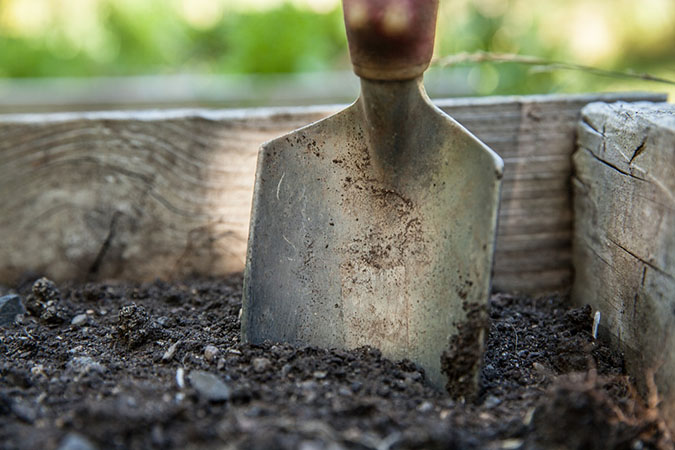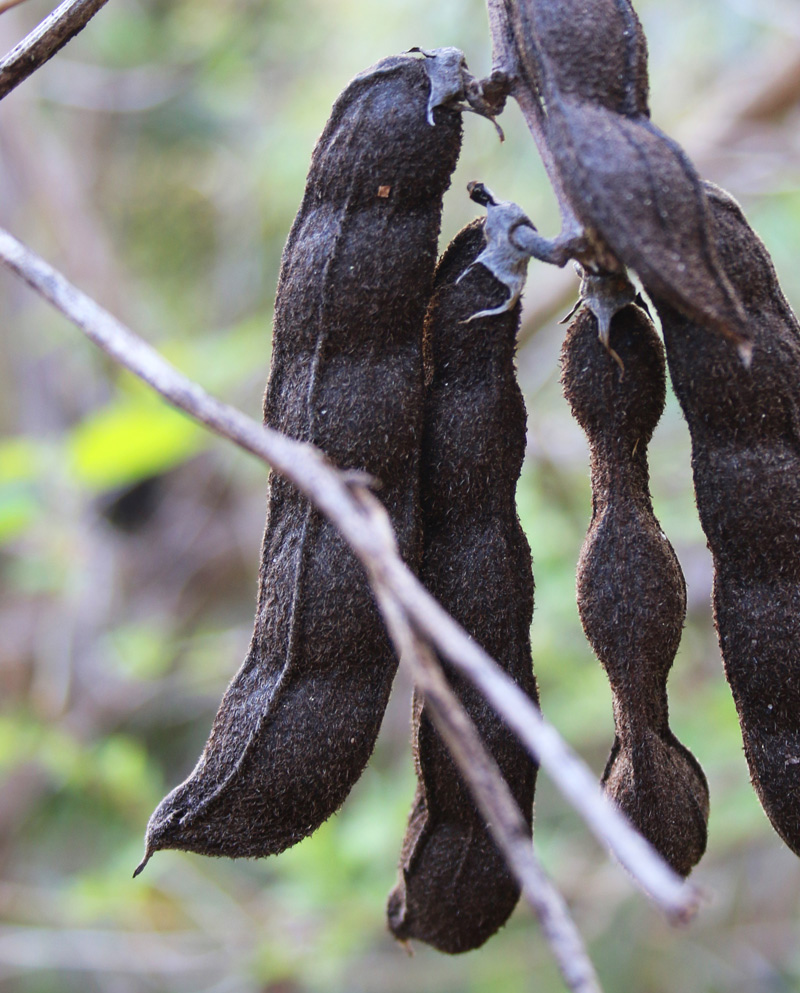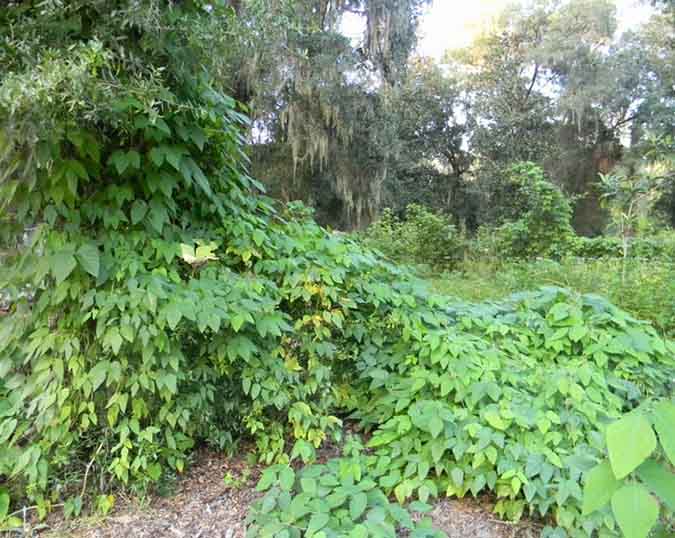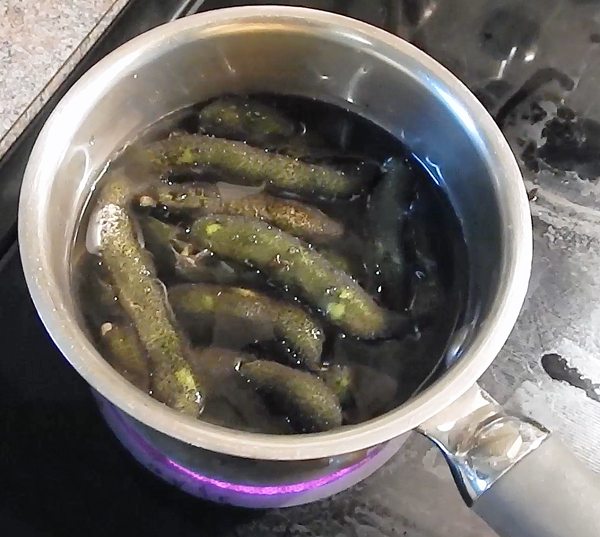Velvet beans are a natural testosterone booster that also raise your sense of well-being and give you extra energy. Here’s how to grow them.
Boost Your Testosterone With Velvet Beans
You wouldn’t guess that a crazy vigorous plant like this would be a natural testosterone booster, would you?
Velvet beans actually not only boost testosterone but also raise dopamine levels and make you feel better about life in general. So if you work out or need more pep, velvet beans are for you.
They’re also well-known as a natural aphrodisiac, and they have several other pleasant advantages. Search around and you’ll find plenty of information on their health benefits.
What Are Velvet Beans?
This wild legume is one that many people have never heard of, so right now you might be asking yourself, “What are velvet beans?”
Mucuna pruriens is a fast-growing vine native to the tropics of southern China and eastern India. Cultivated for centuries, its pods are prized for human consumption while its leaves serve as animal feed.
You May Also Enjoy:
As the plant’s popularity has spread, velvet beans have become a hot commodity. In fact, the seeds are rather expensive now that they’re better known as a health supplement.
Fortunately, once you have seeds, you can grow lots and lots of them, provided you have a long enough growing season. Here in North Florida, they grow like weeds.
How to Grow Velvet Beans

Image by walkersalmanac from Pixabay
Growing these power-packed pods is easier than easy.
Plant velvet beans in spring after all danger of frost has passed, and give them something they can climb—just be aware that they will completely cover small trees and shrubs. Even moderately large trees can get overwhelmed with their strong, twisting vines.
In other words, don’t plant them next to your award-winning camellias.
They can tolerate some shade but do best in full sun. Poor soil isn’t a big deal—they can handle it, thanks to their nitrogen-fixing ability.
You May Also Enjoy:
Grow a Weed Garden! Identifying and Using Chickweed
They grow wonderfully with hot weather and lots of rainfall. If it’s not rainy, irrigation will get them growing faster; however, I plant mine in half-wild parts of the yard and never water . . . and I still get plenty of beans.
I’ve even guerrilla planted them in empty lots around my neighborhood and had them grow pretty well. If the soil were good enough, I think they’d naturalize (they’ve almost done so in my food forest—I always have a few plants every year even without planting new ones).
NOTE: There are wilder forms of velvet beans that are covered with stinging hairs, giving them the name “madness bean.” The ones I grow have mostly had that trait bred out of them, though handling the fuzzy velvet pods can make you a little bit itchy, particularly if you have sensitive skin.
Cooking Up Perfect Pods
Cooking velvet beans takes about 15 minutes of boiling.
I pick the beans when they’re filled out and green, put them in a pot, cover with water, add lots of sea salt, then boil until they soften and start to split open, revealing the tasty beans inside.
The pods themselves are tough and inedible, but the seeds inside taste like really good boiled green peanuts.
Once I’ve cooked my green velvet beans, I shell them, dry the green beans off, and then freeze them so I can ration out beans through the year. The pods are only produced in the late summer and fall, so you need to plan ahead.
How to Use Velvet Beans
You know your pods are ready for the table when the beans inside have filled out nicely, but the pods haven’t dried out. If you want velvet bean seeds, you need to let them dry on the vine until the pods are nice and hard.
You can roast the seeds and use as a coffee substitute, though they unfortunately lack caffeine.
The dry beans can also serve as a health supplement, but I have stuck to the tasty green beans instead.
You May Also Enjoy:
Our 13 Favorite Books About Herbal Medicine
Velvet beans are powerful medicine and contain a wide range of bioactive compounds. A friend of mine ate quite a few of them on a daily basis and ended up with migraines.
A few is good enough—though they taste so good cooked that you’ll want to eat lots and lots.
I eat five beans a day for a few weeks, then quit for a week, then do it again. John Starnes’s video on velvet beans introduced me to the on-and-off approach, and it’s supposed to help keep your body from getting too accustomed to the dopamine and testosterone effects. Seems to work well.
Where to Buy Velvet Beans
So—there you have it—a natural testosterone booster you can grow in your garden. The most common question I’m asked about this tropical legume is where to buy velvet beans. I got mine through other gardeners, so you can start with friends like I did or try your hand at buying them online.
To see what they look like growing on the vine and how I cook them, check out my short video:
What Do You Think?
Do you have any experience with growing or eating velvet beans? Have a lead on where to buy velvet beans? Let me know in the comments below. Or start planting your own next spring, and then check back in!
__________________________
This is an updated version of an article that was originally published on June 3, 2016. The author may not currently be available to respond to comments; however we encourage our Community members to chime in to share their experiences and answer questions!
Psst! Our Lawyer Wants You to Read This Big, Bad Medical Disclaimer –> The contents of this article, made available via The Grow Network (TGN), are for informational purposes only and do not constitute medical advice; the content is not intended to be a substitute for professional medical advice, diagnosis, or treatment. Always seek the advice of a qualified health care provider with any questions you may have regarding a medical condition. If you think you may be suffering from any medical condition, you should seek immediate medical attention. You should never delay seeking medical advice, disregard medical advice, or discontinue medical treatment because of information provided by TGN. Reliance on any information provided by this article is solely at your own risk. And, of course, never eat a wild plant without first checking with a local expert.
The Grow Network is a participant in the Amazon Services LLC Associates Program, an affiliate program designed to provide a means for our team to earn fees for recommending our favorite products! We may earn a small commission, at no additional cost to you, should you purchase an item after clicking one of our links. Thanks for supporting TGN!
David The Good is a Grow Network Change Maker, a gardening expert, and the author of five books you can find on Amazon: Compost Everything: The Good Guide to Extreme Composting, Grow or Die: The Good Guide to Survival Gardening, Totally Crazy Easy Florida Gardening, Create Your Own Florida Food Forest, and Push the Zone: The Good Guide to Growing Tropical Plants Beyond the Tropics. Find fresh gardening inspiration at his website TheSurvivalGardener.com and be sure to follow his popular YouTube channel.










COMMENTS(10)
Aww yeah! I have some velvet beans just about ready to be picked and I can feel a rise just thinking about eating them.
I live in Pittsburgh, PA. Would they grow here and where would I get Seeds? Always looking for New Foods to grow and eat 😀
I am going to grow these
thanks
Sounds like they could be invasive. Where is the best place to buy the seeds?
Will these grow in Arizona? And if so, where might I find the seeds?
i live in a tiny apartment on the half sunny side of the building. Would you recommend giving them a try? Is it possible to grow these beans inside?
Be careful with Mucuna Pruriens as supplement, for some people warn it can inbalance neurotransmitters and taken too long cause depression.
Why not take the bens off the Shell, like peas?
I live in Tempe AZ where it is now 111 degrees . Hot! So would they only grow here in the winter? And where would I get these seeds as this is a wild plant, right? Thanks for this information. I would like to try it as my husband gives himself shots of testosterone as he had his prostate removed. Not good. The medication is very expensive too. Thank you,Jeanne
Butler
Please tell us more. Would these grow in the Pacific NW? We have the water.